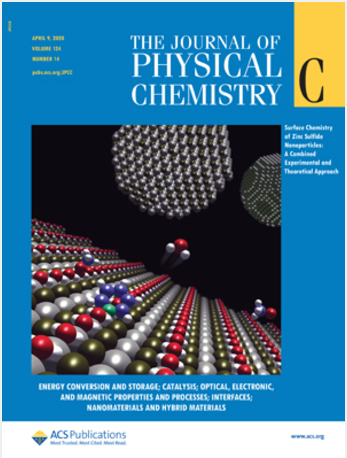The Environmental Stability of CsPbBr3 PQD Thin-Film Scintillators with Encapsulants
IF 3.3
3区 化学
Q2 CHEMISTRY, PHYSICAL
引用次数: 0
Abstract
CsPbBr3 perovskite quantum dots (PQDs) are promising candidates for scintillator materials due to their tunable emission wavelength, high light yield, high atomic number, and low cost. However, their poor environmental stability hinders further practical applications. Herein, CsPbBr3 PQD thin film scintillators are encapsulated with selected PMMA, PS, and ER with different thicknesses using the spin-coating method. Photoluminescence spectroscopy is employed to evaluate the light output affected by environmental stability. The results indicated that the PS film outperforms the other two encapsulants in the thermal stability tests at 100 °C and humidity stability tests at relative humidity levels of 95–100%. In particular, the thick PS film, measuring 34.49 μm, demonstrates excellent environmental stability, while the thicknesses of the films ranging from 1.44 to 34.5 μm do not influence the light output of the CsPbBr3 PQD thin-film scintillators, a finding that is corroborated by simulations. This work has significant implications for the practical application of all-inorganic perovskite scintillators in ionizing radiation detection.

带封装剂的 CsPbBr3 PQD 薄膜闪烁体的环境稳定性
CsPbBr3包晶量子点(PQDs)具有发射波长可调、光产率高、原子序数高和成本低等优点,是很有前途的闪烁体材料。然而,它们较差的环境稳定性阻碍了其进一步的实际应用。本文采用旋涂法将 CsPbBr3 PQD 薄膜闪烁体封装在不同厚度的 PMMA、PS 和 ER 中。采用光致发光光谱评估光输出受环境稳定性的影响。结果表明,在 100 °C 的热稳定性测试和相对湿度为 95-100% 的湿度稳定性测试中,PS 薄膜的性能优于其他两种封装材料。特别是厚度为 34.49 μm 的 PS 薄膜具有出色的环境稳定性,而厚度在 1.44 μm 至 34.5 μm 之间的薄膜并不影响 CsPbBr3 PQD 薄膜闪烁体的光输出,这一发现也得到了模拟的证实。这项工作对全无机包晶闪烁体在电离辐射探测中的实际应用具有重要意义。
本文章由计算机程序翻译,如有差异,请以英文原文为准。
求助全文
约1分钟内获得全文
求助全文
来源期刊

The Journal of Physical Chemistry C
化学-材料科学:综合
CiteScore
6.50
自引率
8.10%
发文量
2047
审稿时长
1.8 months
期刊介绍:
The Journal of Physical Chemistry A/B/C is devoted to reporting new and original experimental and theoretical basic research of interest to physical chemists, biophysical chemists, and chemical physicists.
 求助内容:
求助内容: 应助结果提醒方式:
应助结果提醒方式:


